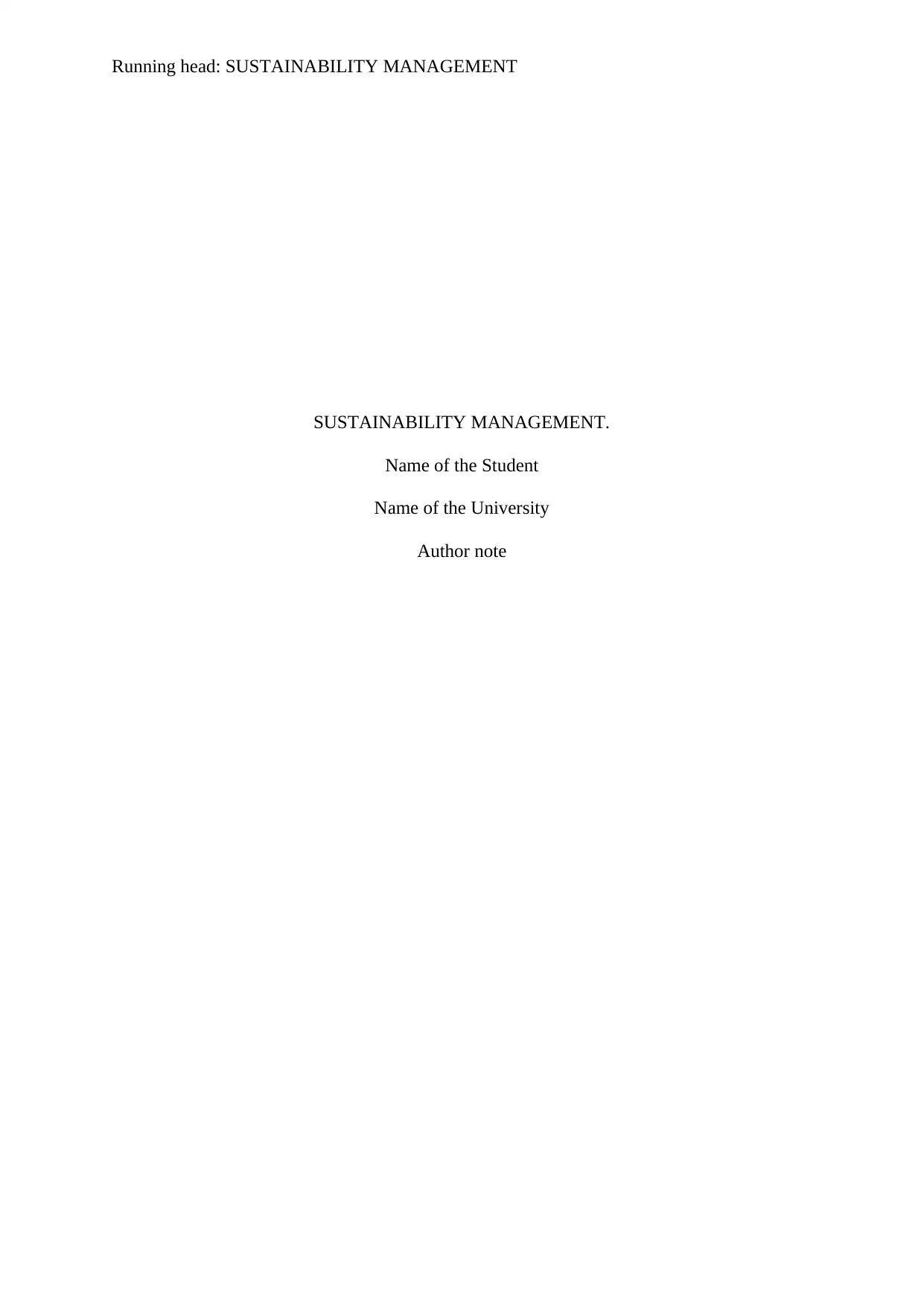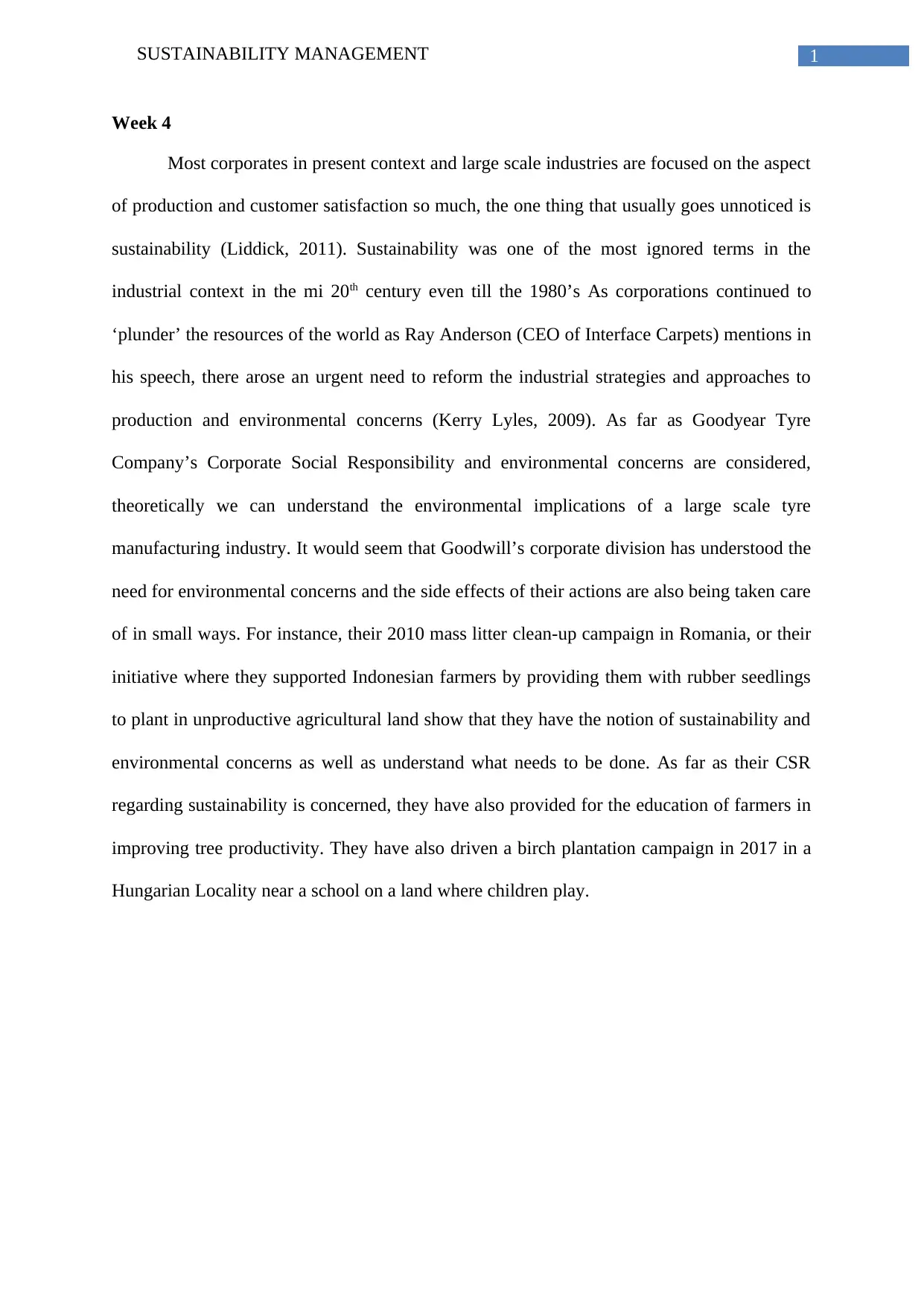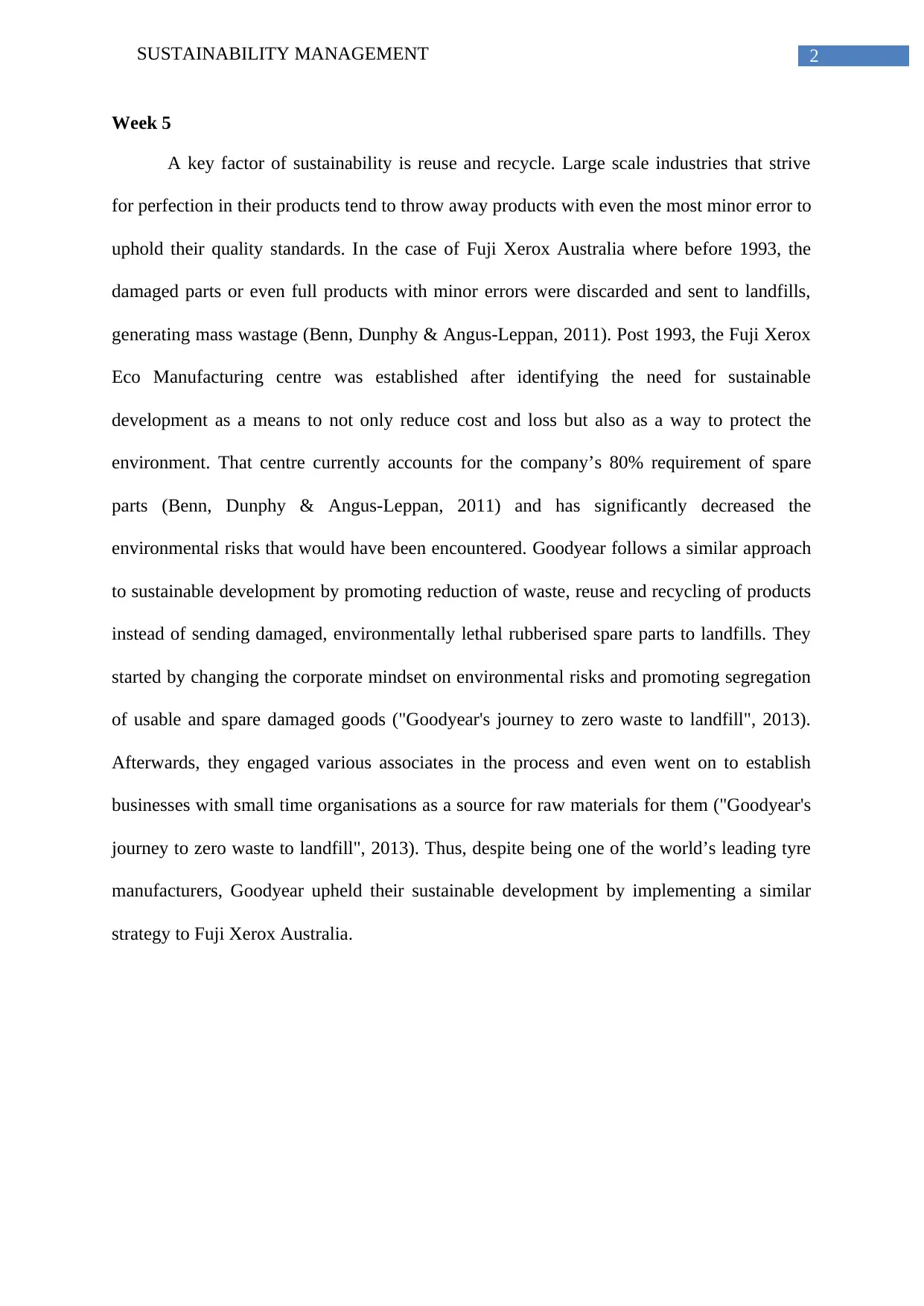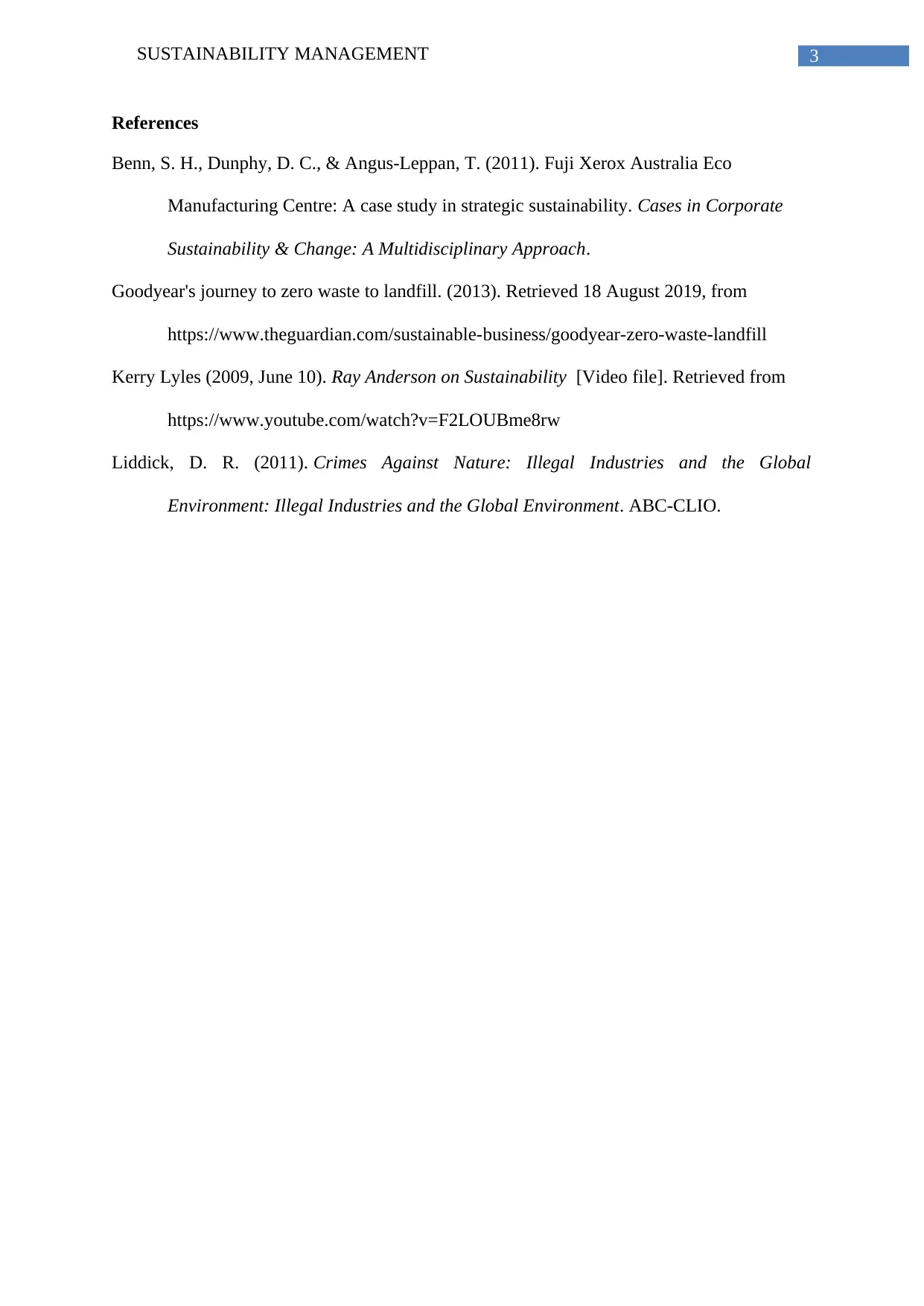Sustainability Management Report: Goodyear and Fuji Xerox Analysis
VerifiedAdded on 2022/10/10
|4
|711
|13
Report
AI Summary
This report examines sustainability management strategies, focusing on the practices of Goodyear and Fuji Xerox. The report begins by highlighting the historical context of sustainability, noting the shift from prioritizing production to incorporating environmental concerns and corporate social responsibility (CSR). It then analyzes Goodyear's initiatives, such as their clean-up campaigns, support for farmers, and birch plantation programs, demonstrating their commitment to sustainability. The report also discusses Fuji Xerox Australia's Eco Manufacturing Centre and its role in reducing waste and environmental risks through reuse and recycling of products. Both companies have implemented similar approaches to sustainable development. References are provided for further reading.
1 out of 4





![[object Object]](/_next/static/media/star-bottom.7253800d.svg)